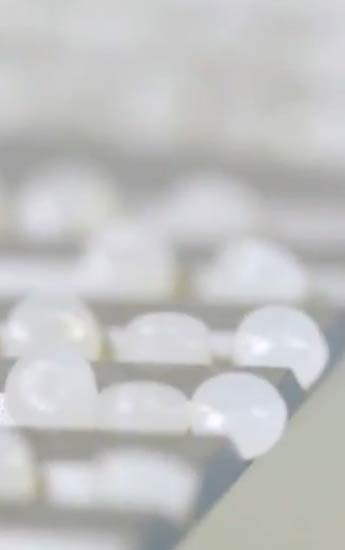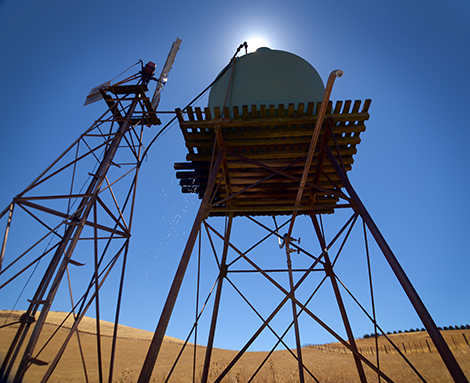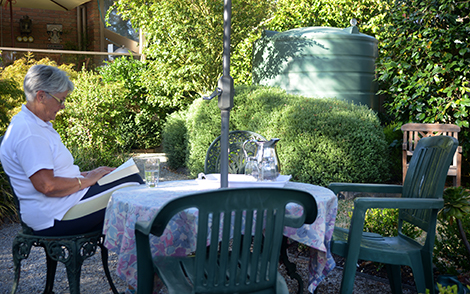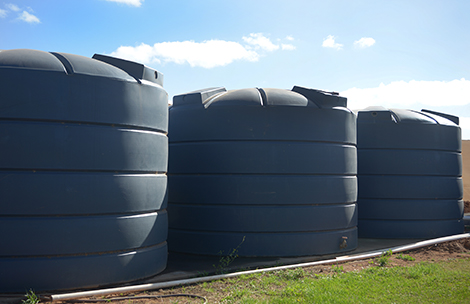THE SCIENCE BEHIND ALKATUFF
Why buy an Alkatuff tank?
Poly water tanks are a cost efficient way to store rainwater for domestic, industrial or commercial applications. Plastic rainwater tanks will not only save money in the long run due to lower water bills but are also a great way to help the environment. Plastic rainwater tanks don’t rust and are made in one single piece through a process called rotational moulding.
The raw material used to manufacture your plastic water tank is called polyethylene. Alkatuff is a unique Australian made brand of polyethylene used to develop plastic water tanks to ensure Australian’s are getting the highest quality product from the beginning. Alkatuff is the only Australian made raw material for water tanks.

When polyethylene is exposed outdoors, the ultra-violet component of the sunlight causes photo-oxidation of the polymer, resulting in surface crazing and a marked deterioration of the mechanical properties with time.
The standard for UV performance for PE Water Tanks specified in AS/NZS 4766 PE Tanks for the Storage of Water and Chemicals is 8,000 hours of uninterrupted exposure to an intense and specifically developed UV light source.
Qenos exhaustively tests the long term UV performance of its Rotational Moulding resins under conditions of controlled irradiance, chamber temperature and humidity and repeated rain cycles. Alkatuff LL711UV resin achieves a class leading UV performance exceeding 20,000 hours against the required standards, ensuring that tanks made from Alkatuff LL711UV are Tough in the Sun.
Stabilisers are incorporated into the polyethylene to provide weather resistance for outdoor applications. Qenos’ premium tank grade Alkatuff LL711UV achieves a rating of UV20 when tested in accordance with requirements AS/NZS 4766 “Polyethylene storage tanks for water and chemicals”. This far exceeds the minimum requirement of UV8.
Both Alkatuff LL711UV and LL705UV contain premium UV and antioxidant packages and meet the requirements of the tank standard AS/NZS 4766.
Where very long UV life spans are required carbon black may be incorporated at 2 – 2.5 w/w%. The type and dispersion of carbon black via compounding are important in achieving the best result.
Linear Low Density Polyethylene (LLDPE) refers to polymer between about 0.915 and 0.930 g/cm3, made via a HDPE type manufacturing process. LLDPE has a higher level of short chain branching than HDPE (specifically introduced by polymerisation with comonomer), but without the long chain branches which characterise LDPE.
Linear polymers including Alkatuff LLDPE have a lower extensional viscosity and show a much reduced tendency to strain-harden. These differences have important implications in the processing behaviour of these polymers. The lower extensional viscosity means that LLDPE is much easier to draw down to thin gauges. Because of its lower melt elasticity, LLDPE has much faster relaxation times and gives lower frozen-in orientation than LDPE. In general LLDPE is expected to give greater impact performance than LDPE for a given MFI and density. For a given MFI and density, LLDPE has a much superior environmental stress crack resistance than LDPE. In linear polyethylenes, the distribution and length of the side branches has a profound effect on the environmental stress crack resistance.
C6 is shorthand for the hexene comonomer used in the Linear Low Density Polyethylene (LLDPE) plastic from which the water tank is made.
In LLDPE, the branching in the molecule is achieved through copolymerisation with comonomers such as either butene (C4), hexene (C6) or octene (C8). These comonomers respectively give ethyl, butyl and hexyl branches. The toughness of the LLDPE is highly dependent on the short chain branch length, which is determined by the comonomer used. A C6 comonomer has a longer short chain branch length than a C4 comonomer, and so on.
The degree of branching increases as the proportion of comonomer in the polymer is increased. The branching structure will hence depend on the type and proportion of comonomer, and also the distribution of comonomer along the molecule (ie. whether the branches are evenly distributed or clumped together). This means that the LLDPE’s supplied by different manufacturers can have noticeably different properties.
In Alkatuff LLDPE, which is a hexene copolymer, the branch points occur every 50 to 100 carbon atoms.
Alkatuff made with a hexene comonomer, gives superior impact strength, stress crack resistance and long-term toughness compared with tanks made with a standard butene (C4) resin.

The Environmental Stress Crack Resistance (ESCR) requirement of AS4766 stipulates 500 hours of performance, whilst Alkatuff® delivers ESCR performance in excess of 1000 hours.
This means that tanks made with Alkatuff® resins holding both water and chemicals will last the distance through superior resistance to stress cracking.

The Australian tank market was slow moving until Qenos got involved. Alkatuff® was designed to exceed the AS4766 standard and with its unique combination of easy moulding and superior in-service performance it ignited the poly tank market and has been driving it ever since.

Alkatuff® resin has a broad processing window creating two important benefits:
- It sinters readily, with easier release and low warpage.
- It has high thermal stability making it less prone to oxidation, discolouration and loss of toughness whilst remaining tolerant of moulding process variation.


